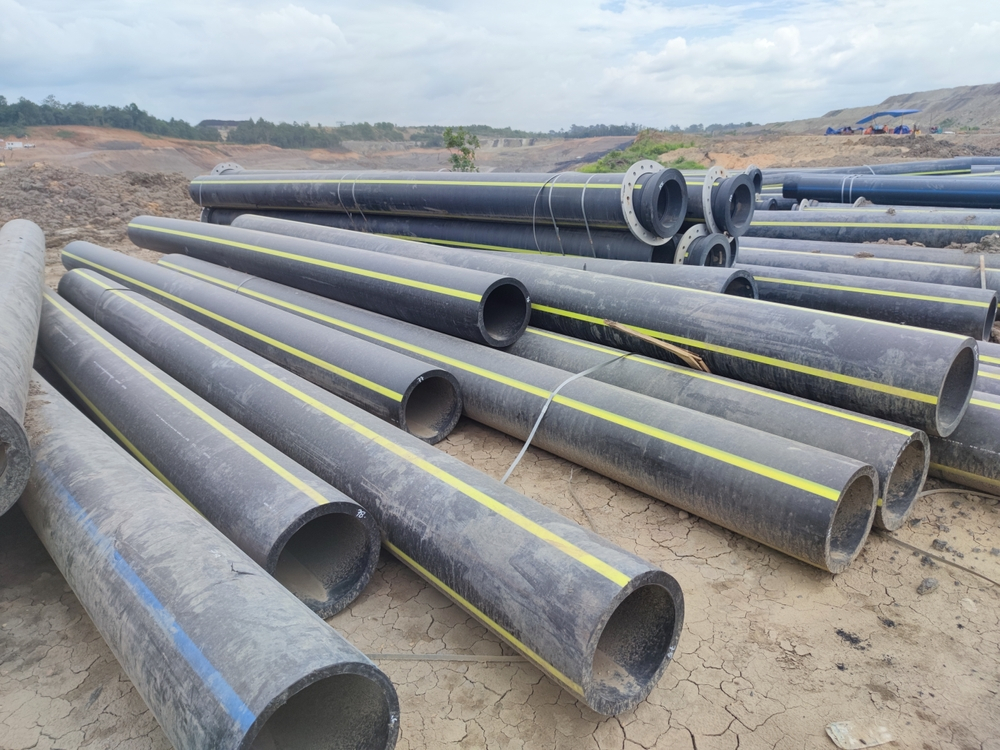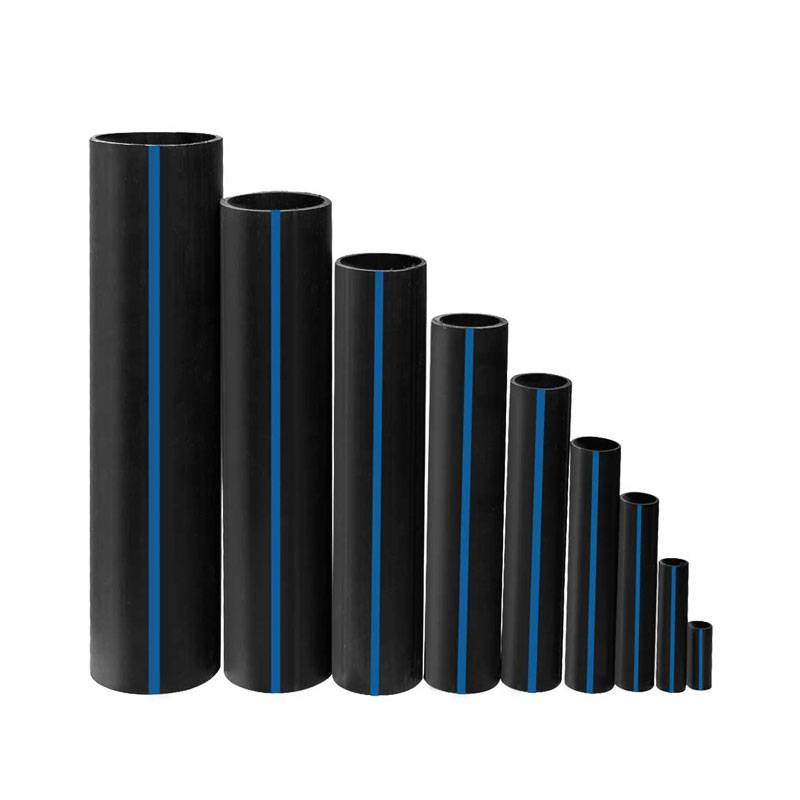How hdpe pipe suppliers Midland TX Are Supporting Oil and Gas
The Essential Actions for Effective Installment of HDPE Pipe in Your Next Task
Effective installment of HDPE pipe requires mindful preparation and execution. Secret steps include assessing project needs, preparing the site, and selecting correct signing up with methods. Each phase plays an essential role in making certain the integrity and performance of the pipeline. Comprehending these important steps can significantly affect the total success of the job - Texas hdpe pipe manufacturer. Nevertheless, the subtleties of each step may hold the trick to getting over usual challenges dealt with during installation
Understanding the Advantages of HDPE Pipe
High-density polyethylene (HDPE) pipe supplies various benefits that make it a recommended option for numerous applications. Its high resistance to corrosion and chemicals assurances resilience in demanding environments, significantly expanding the life expectancy of setups. Additionally, HDPE's adaptability permits simpler setup, specifically in challenging surfaces, as it can flex without damaging. The lightweight nature of HDPE pipe simplifies transport and handling, minimizing labor costs throughout installment.
HDPE pipeline is recognized for its low friction coefficient, which enhances fluid flow and reduces power intake. Its seamless building minimizes the threat of leaks, contributing to far better source administration and environmental defense. In addition, HDPE is recyclable, straightening with sustainable practices and reducing ecological impact. Generally, the mix of stamina, adaptability, and eco-friendliness makes HDPE pipeline an exceptional choice for a broad range of projects, from water circulation to industrial applications.
Preparation Your HDPE Pipe Installation
When preparing a setup of HDPE pipeline, cautious consideration of several key elements is important to safeguard a successful project. Project supervisors must analyze the certain requirements of the pipe, including the meant use, flow rates, and ecological problems. Recognizing these criteria will direct the choice of suitable pipeline dimensions and material quality.
Next, timelines should be developed, factoring in procurement routines and any possible hold-ups. Control with local authorities for authorizations and regulatory conformity is likewise vital. Additionally, a comprehensive budget plan should be prepared, including all prices related to products, labor, and equipment.
Last but not least, it is crucial to involve a certified team experienced in HDPE pipe installation. Their competence will certainly help mitigate threats, guarantee adherence to sector standards, and eventually add to the job's success. Extensive preparation lays the foundation for a smooth installation procedure and durable efficiency of the HDPE piping system.
Preparing the Site for Setup
Correct website preparation is important for the successful installment of HDPE pipe. Before installation begins, the site must be thoroughly evaluated to assure it fulfills all required needs. This consists of surveying the ground for existing structures, utilities, and possible hazards that can impede the installation procedure.

Appropriate elevation and alignment need to be developed to keep a regular slope for drainage functions. Appropriate water drainage around the setup website is also crucial to protect against water buildup, which can result in issues down the line.
Methods for Joining HDPE Pipings
Attaining a reputable link between HDPE pipelines is essential for making sure the honesty and durability of the installment. Different techniques exist for joining these pipelines, each suited for different job demands. Fusion welding is just one of one of the most common methods, using warm to bond the pipeline finishes with each other, developing a smooth and resilient connection. This method can be further classified into outlet blend and butt blend, relying on the pipe setups.
Mechanical installations are one more alternative, using clamps and threaded ports to join sections of HDPE pipeline. While normally faster to set up, they may call for additional maintenance gradually. Electrofusion is a specific technique that involves utilizing electrical existing to warm and fuse the pipelines through specifically designed fittings, ensuring a solid bond. Selecting the proper joining technique is essential, as it directly affects the overall performance and reliability of the HDPE piping system in the designated application.
Checking and Evaluation of Installed Pipeline
The screening and assessment of set up HDPE pipelines are essential to guaranteeing their performance and longevity. This process incorporates visual evaluation methods, stress testing approaches, and leak discovery procedures to determine potential concerns. By employing these approaches, specialists can confirm the honesty of the installation before it is put into use.
Aesthetic Examination Techniques
Utilizing reliable aesthetic assessment techniques is vital for guaranteeing the stability of mounted HDPE pipes. Inspectors must methodically take a look at all visible sections of the pipe to determine any type of indicators of damages, imbalance, or inappropriate installation. Secret signs to evaluate consist of joint honesty, surface irregularities, and links. Examiners may utilize tools such as magnifying glasses or cams to improve exposure and detail. It is vital to examine for indications of environmental anxiety, such as bending or too much flexing, which can jeopardize efficiency. Regular paperwork of searchings for permits tracking adjustments gradually and helps guide required fixings. By sticking to recognized aesthetic evaluation protocols, project teams can especially decrease the danger of future failures and ensure lasting reliability of the piping system.
Stress Examining Techniques
Aesthetic inspection serves as an initial step, yet it is not enough on its very own to guarantee the efficiency of set up HDPE pipes. Stress testing techniques are Continued necessary for making certain the integrity of these systems. Generally, hydrostatic screening is utilized, where the pipelines are full of water and subjected to pressure levels over the desired operating pressure. This approach assists determine weak points or possible leakages. Pneumatically-driven screening can also be utilized, although it carries higher threats due to the compressibility of air. No matter the approach selected, sticking to sector requirements and safety methods is crucial. After conducting pressure tests, detailed documentation is necessary to verify the outcomes and verify that the installation fulfills all operational demands before continuing to the following phase of the project.

Drip Discovery Treatments
Exactly how can one guarantee that mounted HDPE pipes are without leaks? Effective leak detection treatments are important to protect the stability of the system. At first, aesthetic inspections should be carried out, looking for signs of water build-up or dirt disintegration around pipeline joints. Following this, stress screening can confirm the system's toughness. A common approach is the hydrostatic test, where water is presented under pressure, keeping track of for drops that suggest potential leaks. Furthermore, progressed technologies, such as acoustic sensing units or infrared thermography, can spot leakages that might not be visible. Routine tracking and upkeep further contribute to the long life of HDPE pipes, guaranteeing they continue to be leak-free throughout their operational lifespan. Proper paperwork of these treatments is essential for compliance and future reference.
Upkeep Tips for Long-Term Efficiency
To ensure the durability of HDPE pipelines, developing a routine inspection schedule is important. This proactive strategy enables the early detection of possible problems, minimizing pricey repair services. In addition, applying appropriate cleaning techniques will certainly help preserve peak efficiency and avoid accumulation that can influence functionality.
Normal Inspection Arrange
Although HDPE pipelines are known for their longevity and resistance to deterioration, developing a regular evaluation timetable is vital for ensuring their long-lasting efficiency. Regular assessments assist recognize prospective concerns such as leaks, joint honesty, and environmental effects that may influence the pipe's performance. It is recommended that assessments occur a minimum of biannually, or much more often in environments with severe conditions. Pipe Manufacturing Midland TX. Throughout these evaluations, visual checks should be conducted to detect indications of wear or damage. Furthermore, utilizing modern technology such as ultrasonic testing can give more understandings into the pipe's condition. By carrying out an organized assessment routine, task supervisors can proactively address problems, thus extending the life expectancy of HDPE view publisher site pipes and preserving system effectiveness
Appropriate Cleansing Techniques
Correct cleaning techniques play a vital role in maintaining the lasting performance of HDPE pipes. Normal cleaning protects against the buildup of debris, sediment, and biofilm, which can lead to blockages and reduced circulation performance. Operators must utilize methods such as high-pressure water jetting or foam cleansing to successfully remove impurities without damaging the pipeline surface. It is essential to this link avoid utilizing extreme chemicals that may break down HDPE material. In addition, arranged maintenance checks should consist of visual examinations for any signs of wear or damages. Effectively trained personnel need to perform these cleansing processes, guaranteeing conformity with safety and security and ecological policies. By implementing these practices, the life-span of HDPE pipes can be significantly extended, making sure ideal performance throughout their operational life.
Frequently Asked Questions
What Are the Ecological Influences of HDPE Pipe Production?
The ecological impacts of HDPE pipeline production consist of greenhouse gas emissions, energy usage throughout manufacturing, potential plastic pollution, and difficulties in reusing. HDPE's longevity and resistance to rust can minimize some ecological worries.
How Does HDPE Pipe Compare to Other Materials?

What Tools Are Essential for HDPE Pipe Setup?
Essential tools for HDPE pipe setup consist of a blend machine, pipe cutters, shovels, gauging tape, and security equipment. Appropriate devices guarantees efficient, secure handling and installment, adding to the job's overall success and integrity.
Are There Any Kind Of Particular Laws for HDPE Pipe Setup?
Certain policies for HDPE pipe installation vary by area, typically regulated by regional, state, or government codes. Compliance with these guidelines assurances security, ecological defense, and capability, making adherence essential for successful task end results.
Can HDPE Piping Be Recycled After Use?
Yes, HDPE pipelines can be recycled after usage. Their polycarbonate nature permits reprocessing, making them appropriate for recycling right into brand-new products. This sustainability element adds to environmental preservation and advertises round economic situation practices in building and construction.